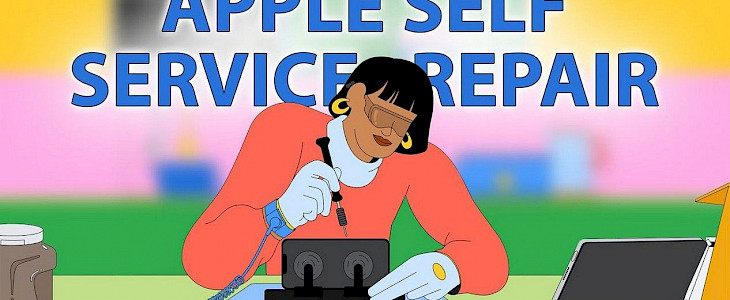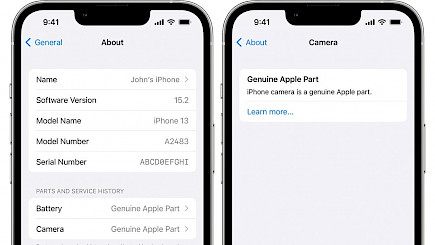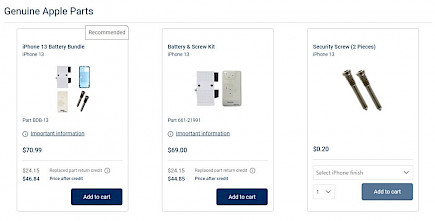
It brought a smile to the faces of a lot of people when Apple came forward and announced that they will be launching a brand new self-repair program.
Thanks to this new initiative by Apple the company would now be able to buy certain parts of iPhones iPads and other devices that previously were unavailable in the market.
This means small repair shops could now purchase genuine Apple parts for iPhones and iPads and other devices at a much lesser rate than what Apple care would offer.
But it's not been more than a month and already a lot of people are criticizing Apple for the new self-repair program.
But why are people doing so?
well, let's find out…
The News:
Apple announced its self-repair program last year and is now rolling it out to iPhones within the US. When Apple launched the program, it was widely regarded as a positive step, as was Apple "finally" changing its stance on repairs to devices as well as tools for third-party support.

Apple has always followed an extremely strict policy on the repair of devices, insisting only authorized service centers can be trusted to examine repairs.
The company has also refused to consider any claims that a third party might have opened the device prior to that.
Apple's self-repair service, which is printed on paper, allows users to purchase tools and replacement components directly from Apple and uses precise instructions.
The reports, however, indicate that Apple maintains "strict control" on "how and which parts are used for self-repair". Apple is providing its tools for a rental period of seven days at a cost of $49 and interested customers can only use components that are accepted by Apple.
The tool kit is said to contain various tools and tools, some of which may not be required for the type of repairs one might try to make at home.
Apple is also monitoring the spare parts that are in circulation to ensure only genuine parts are used for repairs.
Therefore, Apple isn't just renting tools that you don't require, but it's in charge of determining what tools are allowed to be used in auto-repair.
According to reports, the process of fixing an appliance that is part of the self-repair program can end up being a lot more costly than going to a certified repair center to make repairs.
According to a report by iFixit, according to a statement from iFixit, an iPhone 12 display costs $269.95 (Rs 20,615 approximately) and you receive $33.60 (Rs 2,565 approximately) when you donate your device over to the firm.
If you then include the $49 rental of the tool kit with the new display, you'll end up spending $285.35 (roughly Rs 21,791 approximately) in comparison to Rs 279 (roughly Rs 21,306 approximately) for repairs at the store.
To be honest, this isn't a huge cost difference. However, why would anyone opt for the self-repair option over repairs at the store if they save time, effort, and even some cash?
In addition, there's a one-time $1,000 (Rs 76,367 approximately) deposit that needs to be deposited to hire the tool kits needed for repairs such as display replacements.
If the equipment is shipped back in a state that Apple finds to be "unacceptable" or is returned within the 7-day timeframe that you have to pay for, you'll forfeit the deposit.
What is Apple's self-repair program?
Apple's right-to-repair program, Self Service Repair, is now in operation.

In essence, the company is now selling authentic Apple device parts and accessories to customers and even provides directions on how to repair Apple devices at home.
This means that even if you wanted to, you couldn't take your broken Apple devices to a repair shop or a third-party repair shop to have them fixed. It is possible to fix it yourself by using certified components and step-by-step instructions.
This is a significant change in the way Apple operates. Apple has for a long time refused to let customers repair their own devices without the help of the Apple Stores or authorized repairers.
Which Apple devices can you fix?
Apple has launched iPhone 12, iPhone 13, and iPhone SE (2022) DIY fixes.

You'll be able to change the battery, display, and camera with parts purchased from Apple, but alternative options will be available for purchase in the future.
Apple will also allow repairs for Macs equipped with M1 chips to be repaired at home. However, this will happen later in 2022.
Winding-up
Thus, it can be said - The limited amount of product available and the huge prices associated with them is eventually forcing users to resort to Chinese copies rather than the original parts.
The only way Apple can salvage itself from this mess is by providing more parts or reducing the prices of the available parts.





